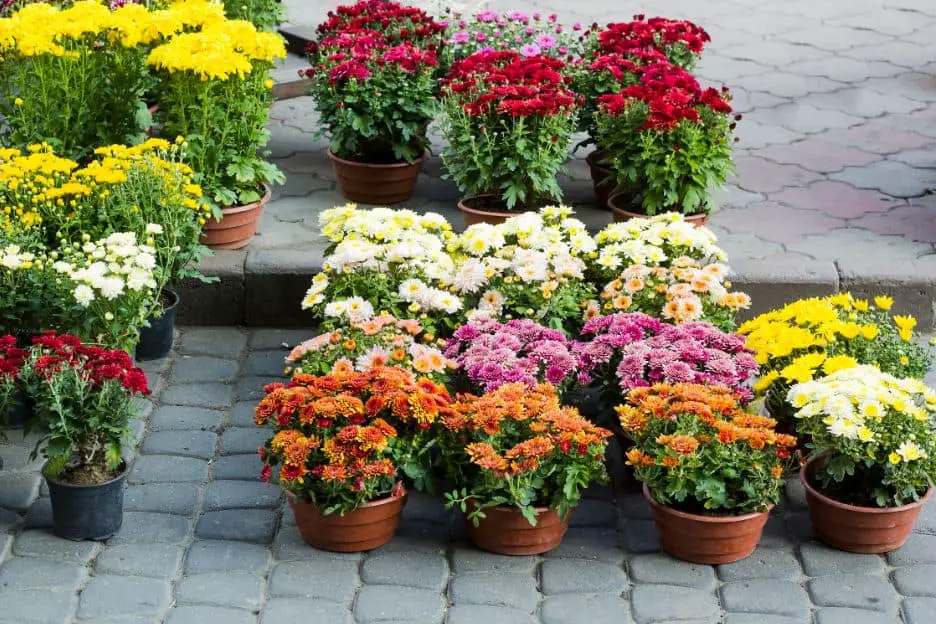Chrysanthemums are often considered essential to fall flower arrangements and decorative gardens. Potted mums, which are widely accessible at big-box retailers and plant nurseries, come in various colors that are perfect for use in autumnal décor. Some gardeners may decide to remove the plants when flowering is over. However, you may be shocked to learn that wide chrysanthemum varieties are true perennials. Do moms reappear in the spring, then?

When Should Mums Be Reduced in the Spring?
The hardiness of chrysanthemums varies depending on the variety. You can often get this information by searching for the cultivated type. Although most chrysanthemums can survive an outdoor winter, some gardeners have had luck overwintering the plant inside in a cool location.
The potted mums should be allowed to enter dormancy naturally to prepare them for the winter. This happens when the autumn weather becomes colder. The leaves will start to dry out at this point and may even start to fall off the plant. It will look that the plant has perished. Its growth will start up again from the plant’s base come spring. The plant’s crown will then sprout multiple new stems from each mom. Any outdated growth or dead stems must be removed for spring mums to provide optimum results. Thankfully, this procedure is short and simple.
Tips for Spring Mum Pruning
Springtime mum care is straightforward. All dried plant components should be removed as fresh growth starts. Old stems can typically be pruned off by hand. However, you may also use garden secateurs or pruners. Gardeners have a few alternatives after each new stem develops at least 2-3 fresh leaves.
Chrysanthemum cuttings are best taken early in the growing season. Cuttings from stems should be made slightly below a set of leaves. Each stem cutting may be inserted into damp potting soil once the bottom leaves have been removed. Although it is not often required, rooting hormone may also be administered. If the appropriate moisture and humidity levels are satisfied, spring mum cuttings should start to root in about a week. The chrysanthemums may be transplanted into pots or to their final placement in the garden after they have developed strong roots.
Gardeners may leave the plant alone to grow to avoid taking cuttings. The chrysanthemums must be “pinched” for the first time after a few weeks. The act of pinching removes each plant stem’s growing point. The plant will start to branch when the growth tip is cut off. Plants with more branches will be bushier and produce more blooms. Before chrysanthemum stems are ultimately permitted to establish blossoms in mid to late summer, they must be repeatedly plucked.
If given the right care, chrysanthemum plants should bloom repeatedly. Established plants may need to be divided as they become congested with time. When growth has just started again, chrysanthemums should be split early in the spring. Dig the plant’s root ball and scoop off any extra dirt to split it. Then, new plants may be properly divided.


